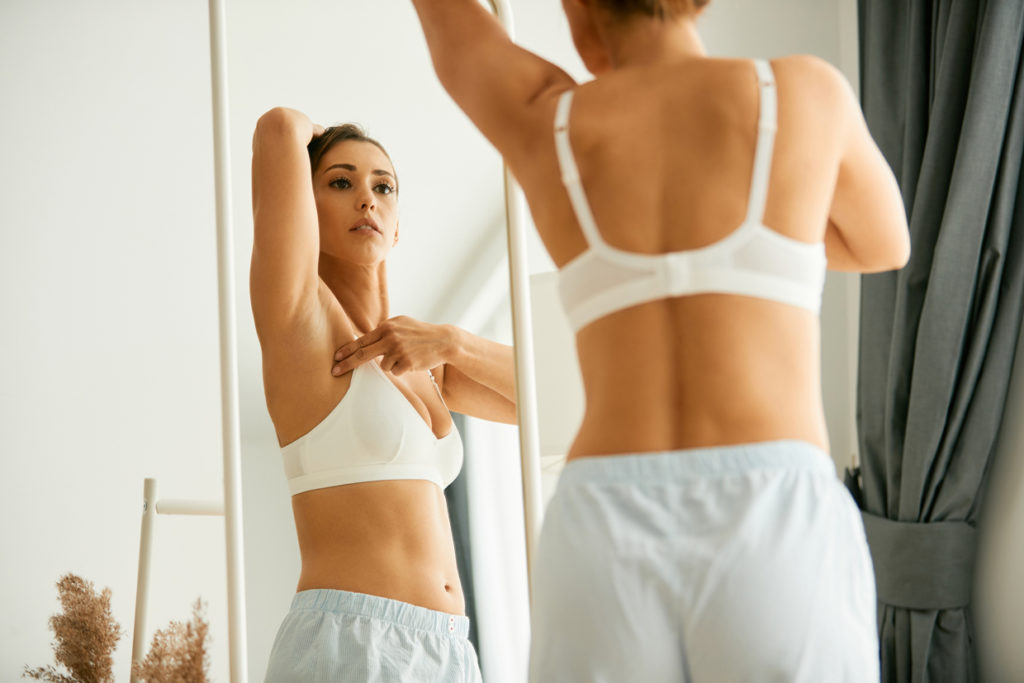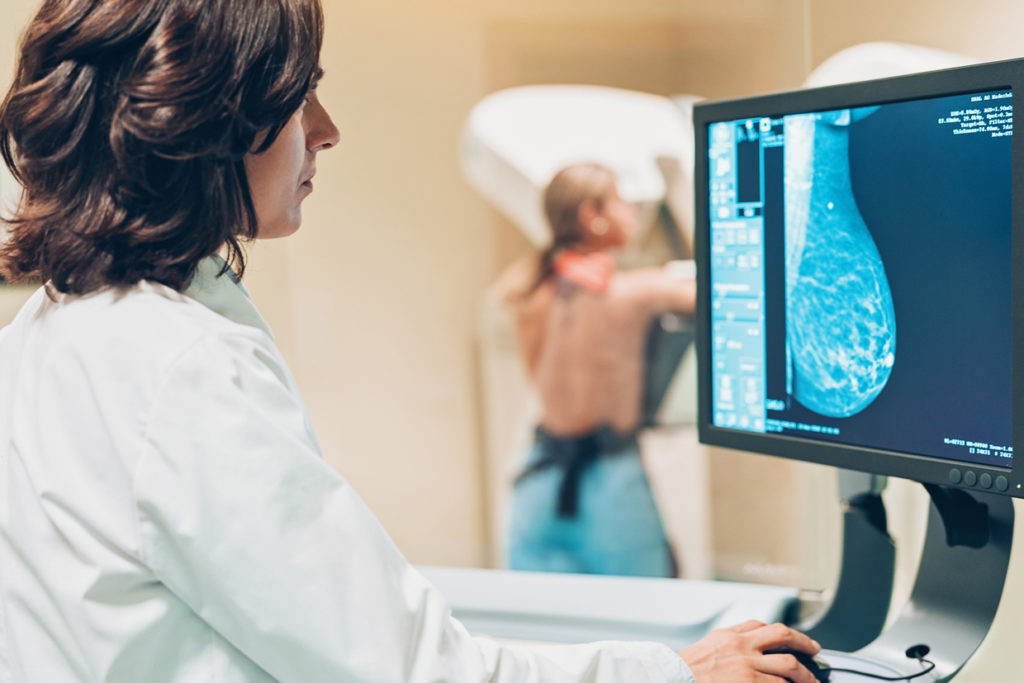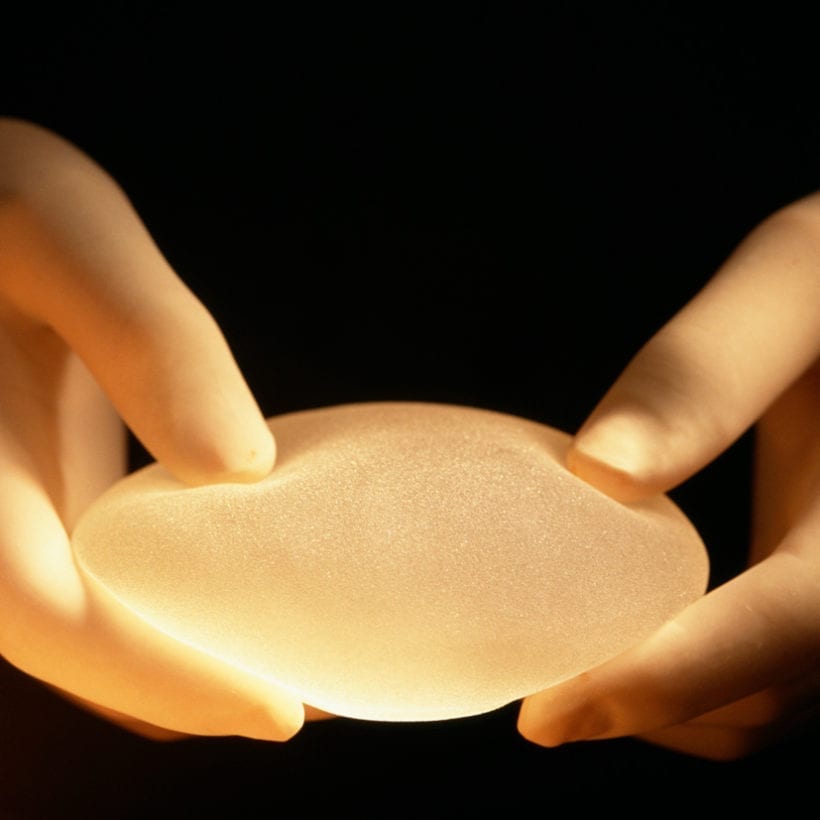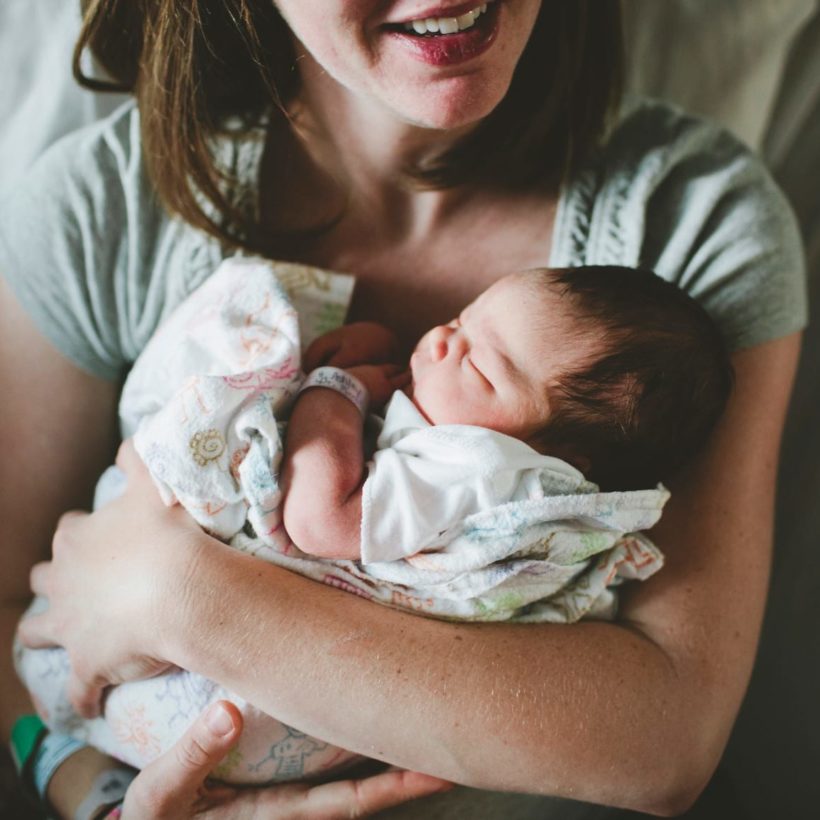How well do you really know your breasts? According to Dr. Heather Richardson, mastectomy surgeon at Bedford Breast Center, there’s no such thing as being too familiar with them. If you can’t remember the last time you inspected your breasts, October is Breast Cancer Awareness Month, and it’s our yearly reminder that a breast self-exam should become a normal part of our regular routines. The American Cancer Society shows that one in eight women will develop breast cancer (aside from skin cancers, it’s the most common). A breast self-exam is an easy yet essential tool for the early detection of potential cancer. When breast cancer is localized and detected early, studies show 99% of patients survive. “Most breast cancers have a nice window where we can have action, and we can have good things happen, and we can have good outcomes,” says Richardson. Below, we dive in with Richardson on exactly why self-exams are so important and how to do one properly.
Sunday Edit: It’s BCA Month, so the topic of breast cancer is on everyone’s mind, but why is it important to do a self-exam as a regular part of your routine?
Dr. Heather Richardson: “The most important reason to do self-breast exams is just to appreciate what your normal tissue texture is, so you’ll be aware if something changes. You’re not completely responsible for finding those small, subtle changes that could be an early sign of breast cancer — you don’t need to put that much pressure on yourselves to feel like you have to memorize your breasts. But, if you’ve never felt your breast tissue before, and you don’t know what’s normal, how are you going to appreciate what’s not normal?”
SE: How often would you recommend that someone perform a self-exam?
Dr. Richardson: “If you have a menstrual cycle, it should be seven to 10 days after the start of your period when your cycle is typically over. The breast tissue is its ‘calmest’ at that point, meaning it’s not quite overstimulated with fluid, and that’s the best time to feel a lump that might be standing out from the surrounding tissue. If you don’t experience a cycle because you’re on menopause or contraception, then roughly once a month should do the check. It’s just about making a habit and routine out of it, like paying your monthly rent.”
When breast cancer is localized and detected early, studies show 99% of patients survive.
SE: So what exactly are you looking for when you’re examining your own breasts?
Dr. Richardson: “You’re first off getting a sense of what your breast tissue generally feels like. What stands out to your fingertips? Does something feel different that you’ve never felt before that you can’t appreciate anywhere else in your tissue? Is there something new that you’re noticing? The red flag is typically something that is hard and painless. It doesn’t have to be in any specific place in your breast, it doesn’t have to be in any position in your breast, and it doesn’t have to be any specific size. A lot of times people think it should feel like the end of a pencil eraser under your skin. It can be deeper. It can be larger. It can be your breast kind of pulling in together where one breast is kind of defying gravity and pulling up and in and your nipples sinking in. It can be a flattening or a funny shadow that you never noticed before, or it can be a new nipple discharge.”

SE: Do you recommend that people do a breast self-exam by a certain age?
Dr. Richardson: “Anybody who is in their teens or ‘20s can certainly start breast exams so that they start feeling comfortable doing it and learn what feels natural and normal for them. Sometimes women will have [non-cancerous] growths in their breasts, and sometimes they’ll notice them when they’re teenagers.”
SE: Should men also perform breast self-exams?
Dr. Richardson: “I don’t think men need to regularly. Male breast cancer is absolutely real, but it’s so rare. I don’t think we need to have men stop, drop, and roll once a month and look at their nipples. Although there’s nothing wrong with just knowing your body, and when men have a breast cancer diagnosis, it’s typically because there’s very little breast gland tissue. And what little bit of breast gland tissue is it is typically intimately involved with the nipple and the areola. Usually, it’s a little hard knot, ulceration, sinkage, or dimpling in the nipple or the areola. I don’t think men need to check themselves once a month unless they have a broken gene.”
SE: What types of people should especially be mindful about doing their monthly exam?
Dr. Richardson: “For men or women: If they have a mutated gene [like the mutation in the BRCA1 — which stands for the Breast Cancer gene one — or BRCA2 gene] or a strong family history of ovarian and breast cancer often of Ashkenazi Jewish heritage, triple-negative cancers in their family, or any unusual patterns of breast cancer. Other than that, I don’t think there’s one patient population or situation that should or shouldn’t do a breast exam.”
SE: Can breast self-exams replace mammograms or other screening tests?
Dr. Richardson: “Well, a lot of women do feel their lumps and bring it to their doctor’s attention. But mammograms [which are X-rays of your breasts] take a deeper look inside the tissues, and that’s when we can tell if something is safe or if it’s cancerous. You just can’t tell with your fingertips if a lump is dangerous or not. Whereas, your screening imaging is really the key of finding things when they can’t be felt and also teasing apart the things that we feel that are healthy and the things that we feel that are not healthy.”

SE: How exactly do you perform a self-exam and what you’re supposed to look for?
Dr. Richardson: “So the first thing you do is to take your clothes off [from the waist up] and you want to look in the mirror. You just want to look at your breasts from different angles by moving your body around. If your breasts cover your body and you need to pick them up to look underneath, please do.
Ask yourself: Do your breasts match? Are they symmetrical? Do your nipples stick out, pull in, or are they discolored? Is one breast kind of pulling up or is it higher than the other? You can move on to feeling your tissue. Use the pad of your three middle fingers with varying pressures. You can go through a couple of times and you can use light pressure to kind of feel the skin and right under the skin, you want to use kind of medium pressure to kind of press down deep. And, you can use harder, firmer pressure to see what that feels like. You want to go in two different directions, so you can go either up and down and then side to side, like a grid. You can go out like a wagon wheel, like the spokes of a wagon wheel, and then around like a target. Or, you can do a combination. Off to the side where your breast ends, go up into your armpit. If you feel any bubbly things that kind of feel like they’re slipping underneath your fingertips, those are usually normal. They should be kind of small and normal, but if they feel hard and really round like marbles then let your doctor kind of check that out and feel that out.
Things that you’re feeling for are essentially hard, painless lumps. Most rubbery lumps, especially in your upper outer breasts in between your nipple and your armpit, are really normal. That’s just your normal milk gland tissue that’s more concentrated in that area. If you’re feeling M&M-sized rubbery bits along the bra line or lower parts of your breasts, that’s usually just little pieces of fat. The last thing you want to do is gently squeeze and look at your nipples. Is anything coming out? Do you have any liquid coming out? Is your nipple pulling in? Is there anything else going on as far as that’s concerned? And then once that’s done, that’s pretty much it. You may want to do the exam both standing and laying down, especially if you’re new to self-exams and you’re getting to know your breasts. There are lotions that help your fingers glide over the skin, but you don’t necessarily need one.”
[Editor’s note: The new Colleen Rothschild “Breast” Friend Self-Exam Butter is formulated with murumuru and bacuri butters, plus a combo of five oils and botanical extracts to give your fingers the ideal level of slip for detecting lumps or bumps.”]
SE: What’s your best advice for someone who finds something abnormal during their self-exam?
Dr. Richardson: “I would just say most things aren’t cancer. Most things that people feel that bring to our attention are not cancer. The first thing that people think when they feel something is that it must be cancer. Try to go to just a neutral place. You don’t know what it is, so let a doctor take the necessary steps to figure it out for you. The best way to get something checked out is with an ultrasound. Make sure to advocate for yourself if you feel like your questions aren’t being answered.”
We only recommend products we have independently researched, tested, and loved. If you purchase a product found through our links, Sunday Edit may earn an affiliate commission.







